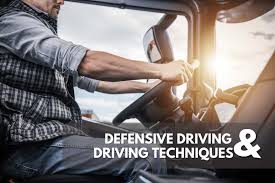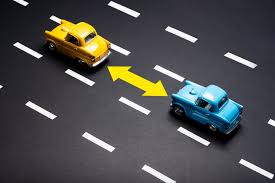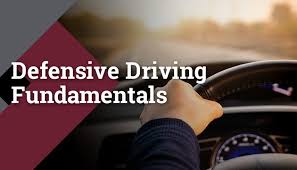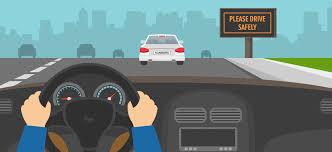What is Defensive Driving? Most Important Element of Defensive Driving?
Defensive driving is a set of techniques and strategies that drivers can use to minimize the risk of accidents and collisions on the road. Defensive driving is based on the concept of anticipating potential hazards and taking proactive measures to avoid them, rather than simply reacting to situations as they arise. It involves being aware of one’s surroundings, driving in a safe and responsible manner, and anticipating the actions of other drivers on the road.
The goal of defensive driving is to reduce the likelihood of accidents and collisions, as well as the severity of any accidents that do occur. By following certain principles and techniques, drivers can become safer and more confident on the road, and can help to prevent accidents that could cause injury, damage to vehicles, or even loss of life.

In this article, we will discuss the key principles and techniques of defensive driving, and explain how they can be applied in practice.
- Maintain a Safe Following Distance
One of the most important principles of defensive driving is maintaining a safe following distance. This means leaving enough space between your vehicle and the vehicle in front of you, so that you have enough time to react if the vehicle in front of you suddenly slows down or stops.
The general rule of thumb is to maintain a following distance of at least three seconds. To calculate your following distance, choose a fixed point on the road (such as a sign or a tree) and count the number of seconds it takes for your vehicle to reach that point after the vehicle in front of you has passed it. If it takes less than three seconds, you are following too closely and should increase your distance.
- Scan Your Surroundings
Another important principle of defensive driving is scanning your surroundings. This means being aware of what is happening on the road around you, and anticipating potential hazards or obstacles that may arise.
To scan your surroundings, you should constantly be checking your mirrors and looking ahead of you to identify potential hazards. This includes checking for other vehicles, pedestrians, cyclists, animals, and any other obstacles that may be in your path.
By scanning your surroundings, you can identify potential hazards before they become an immediate threat, giving you more time to react and take evasive action if necessary.

- Use Your Signals
Using your turn signals is a simple but important aspect of defensive driving. By signaling your intention to turn or change lanes, you can alert other drivers to your movements and help to prevent collisions.
Always use your signals when changing lanes, merging onto the highway, turning at an intersection, or making any other maneuver that could affect other drivers on the road.
- Maintain Control of Your Vehicle
Maintaining control of your vehicle is crucial to defensive driving. This means keeping your vehicle in good condition, following the speed limit, and avoiding any reckless or distracted behavior that could put yourself or others at risk.
In addition to these basic principles, there are several specific techniques that you can use to maintain control of your vehicle, including:
- Keeping both hands on the steering wheel
- Maintaining a steady speed and avoiding sudden acceleration or braking
- Avoiding overcorrection if your vehicle starts to slide or skid
- Braking and steering smoothly and gradually, rather than jerking or swerving
- Stay Alert and Focused
Staying alert and focused while driving is essential to defensive driving. This means avoiding any distractions, such as texting, eating, or using a mobile device while driving.

It also means staying alert and aware of your surroundings, even on familiar roads or in low-traffic situations. Fatigue and drowsiness can also impair your ability to drive safely, so it’s important to take breaks and rest when necessary.
- Anticipate the Actions of Other Drivers
Another key principle of defensive driving is anticipating the actions of other drivers on the road.
Most Important Element of Defensive Driving?
While all of the principles and techniques of defensive driving are important, there is one element that stands out as perhaps the most crucial: anticipation.
Anticipation involves being aware of potential hazards on the road and taking proactive measures to avoid them. It requires drivers to be constantly scanning their surroundings, predicting the actions of other drivers, and adjusting their own driving behavior accordingly.
Here are some of the key ways that anticipation can be applied in defensive driving:

- Anticipating Potential Hazards
One of the most important aspects of anticipation is being able to identify potential hazards on the road before they become an immediate threat. This involves scanning your surroundings constantly and being aware of what is happening around you.
For example, if you are driving on a highway and notice that traffic up ahead is slowing down, you can anticipate that there may be an accident or some other obstruction on the road. By slowing down and giving yourself extra space, you can avoid a potential collision.
Similarly, if you see a pedestrian or cyclist approaching an intersection, you can anticipate that they may attempt to cross the road and adjust your speed and position accordingly.
- Predicting the Actions of Other Drivers
Another key aspect of anticipation is predicting the actions of other drivers on the road. This involves paying attention to their behavior and body language, and being able to anticipate their next move.
For example, if you notice that a driver in the lane next to you is distracted or looking down at their phone, you can anticipate that they may suddenly swerve or drift into your lane. By being aware of this potential hazard, you can adjust your own driving behavior to avoid a collision.
Similarly, if you are approaching an intersection and notice that a driver is waiting to turn left across your path, you can anticipate that they may misjudge your speed and pull out in front of you. By slowing down and being prepared to brake, you can avoid a potential collision.
- Adjusting Your Driving Behavior
Once you have identified potential hazards and predicted the actions of other drivers, the next step is to adjust your own driving behavior accordingly. This may involve slowing down, changing lanes, or taking evasive action to avoid a collision.
For example, if you are approaching an intersection and notice that a driver is waiting to turn left across your path, you can slow down and be prepared to brake in case they misjudge your speed. Similarly, if you notice that a driver in the lane next to you is distracted or swerving, you can change lanes or give yourself extra space to avoid a collision.

By adjusting your driving behavior based on your anticipation of potential hazards, you can help to prevent accidents and collisions on the road.
- Being Proactive Rather Than Reactive
Perhaps the most important aspect of anticipation is that it allows drivers to be proactive rather than reactive. Rather than simply reacting to situations as they arise, defensive drivers are constantly looking ahead and taking proactive measures to avoid potential hazards.
This can help to reduce the likelihood of accidents and collisions, as well as the severity of any accidents that do occur. By being proactive and anticipating potential hazards, drivers can help to keep themselves and others safe on the road.
In summary, while all of the principles and techniques of defensive driving are important, anticipation stands out as perhaps the most crucial element. By being constantly aware of potential hazards, predicting the actions of other drivers, and adjusting your own driving behavior accordingly, you can help to prevent accidents and collisions on the road and keep yourself and others safe.






